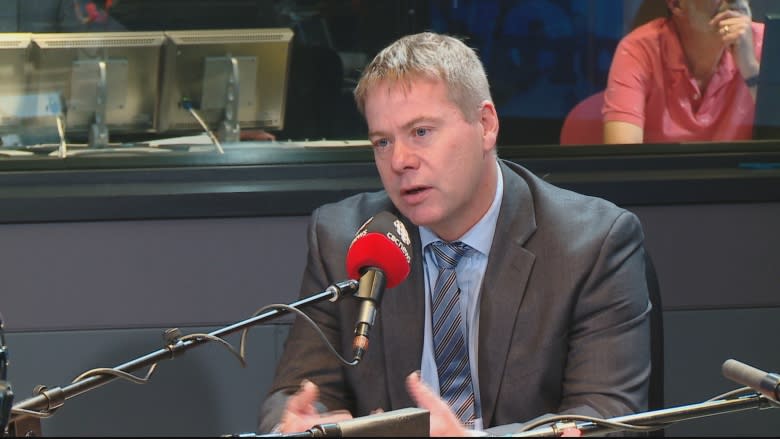Making roads safe for pedestrians, cyclists means lowering speed, expert says
If Toronto wants to get serious about reducing the number of pedestrian and cyclist deaths on its streets, then it will have to think about road safety in a completely new way, says a Swedish transportation expert.
Matts-Åke Belin, project manager with Vision Zero Academy in Sweden, said that means looking at the road system as a whole and redesigning with pedestrians and cyclists in mind.
It's all about lowering speed while making unprotected road users a priority, he said.
"There's a perception that the road safety problem is really about the individual user," Belin told CBC's Metro Morning on Monday. "Vision Zero challenges that mindset, I would say. Vision Zero is all about how we design our road transport system."
Cars hit 542 pedestrians and 541 cyclists over 112 days in Toronto since June — an average of nearly 10 collisions a day.
Belin said making roads safer means designing a human-friendly system that acknowledges that humans make mistakes.
Vision Zero, according to its website, can be defined in one sentence: "No loss of life is acceptable." It is based on the idea that people are human and make errors.
"The road system needs to keep us moving. But it must also be designed to protect us at every turn," it reads. Roads are planned, designed and built to boost safety and lower the number of fatal accidents.
Belin said it's not about blaming the victims who are hit by vehicles.
"You have to realize that you have young people, you have old people, you have all kinds of people. With a philosophy like Vision Zero, you take that for granted. Instead of starting to change them, you have to start to accommodate for them and design a system for humans."
He said Sweden has implemented practical measures to prevent deaths, including roundabouts on municipal and rural roads to calm traffic. The crashes that occur are less severe because the speed of the vehicles is lower. He said the difference in speed can mean the difference between injuries or death.
If you get hit by a car travelling at 50 kilometres an hour, the risk of being killed is 80 per cent, but if you get hit by a car travelling at 30 kilometres per hour, the risk of being killed is less than 10 per cent.
"It's a dramatic difference," he said.
Sweden also has what are called "2+1" roads, which consist of three lanes, with two lanes in one direction and one lane in the opposition direction. A cable barrier separates the two directions of traffic. Research has shown that the accident rates on 2+1 roads are lower than on traditional two-lane highways.
Belin — who was scheduled to speak on Monday at a seminar on the Swedish approach to road safety in Toronto at the Canadian Urban Institute — said 2+1 roads mean head-on collisions are infrequent in Sweden. "That is really an innovation," he said.
'Your society seems to be much more car dependent," Belin said. "If you want to increase the number of cyclists and pedestrians, you have to redesign your system. You have to give priority to unprotected road users because they are vulnerable. When you have conflicts between cars and pedestrians and cyclists, you have to reduce the speed in these conflicts."
Ninety per cent of all accidents are due to human factors, but he said that doesn't mean the entire solution is about human behaviour.
"We have come to think of fatalities as the price of our mobility, but that is not the case," he said. "We have lots of knowledge now."



